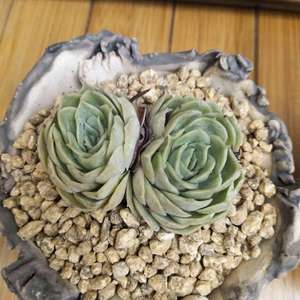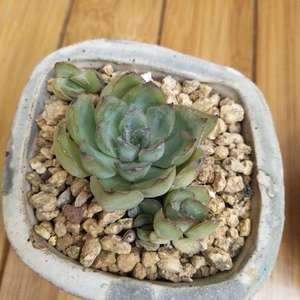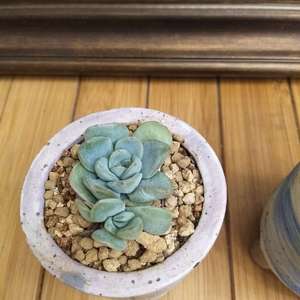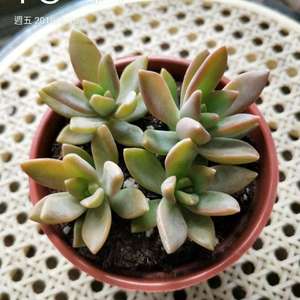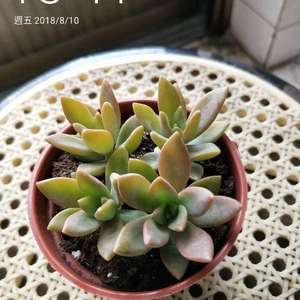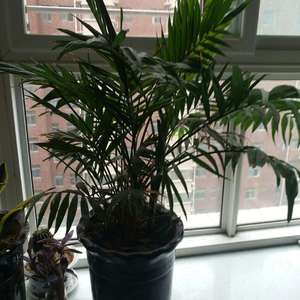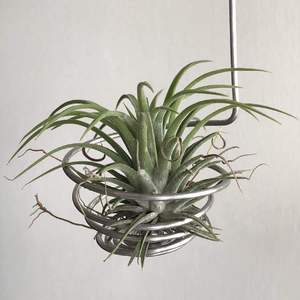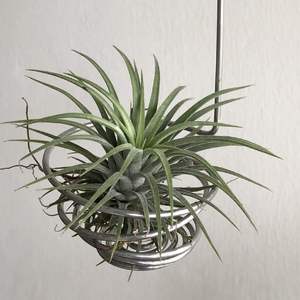文章
Miss Chen
2018年08月09日

Description: This perennial wildflower is 1-3' tall, branching frequently. The stems are light gray-green, terete, and sparsely to moderately covered with short fine hairs. The alternate leaves are 1½-3" long, ¾-1½" across, and lanceolate, oblanceolate, or ovate in outline; each leaf is pinnate-pinnatifid with 2-6 pairs of lateral leaflets and a terminal leaflet. The leaflets are oblong in shape and pinnatifid with pointed lobes. The upper surface of each leaf is light to medium gray-green, while the lower surface is light gray-green; both surfaces are sparsely to moderately covered with short fine hairs. The lower leaves have short flat petioles, while the upper leaves are sessile or nearly so. The upper stems terminate in individual flowerheads about 1½-2" across. Each flowerhead consists of 20-32 yellow ray florets that surround a large dome-like cluster of golden yellow disk florets. The ray florets are fertile and pistillate (female); the petaloid (petal-like) extension of each ray floret terminates in 2-3 blunt teeth. The tiny disk florets are fertile and perfect; the corolla of each disk floret is narrowly tubular with 5 spreading lobes.
Around the base of each flowerhead, there are numerous phyllaries (floral bracts) that are arranged together in a single series. Individual phyllaries are light green, linear in shape, and membranous along their upper margins; they are sparsely to moderately covered with short fine hairs. The peduncles (stalks) of the flowerheads are relatively long and unbranched; they are similar in appearance to the stems. The crushed foliage has an aromatic scent. The blooming period occurs from mid-summer to early fall, lasting about 2 months. The florets are replaced by narrowly oblongoid achenes about 2 mm. in length; these achenes are slightly four-angled and slightly flattened. At the apex of each achene, there is a short angular crown.
Cultivation: The preference is full or partial sun and mesic to dry conditions. Different types of soil are tolerated, including those containing loam, clay-loam, and gravelly material.

Range & Habitat: The introduced Yellow Chamomile rarely escapes from cultivation in Illinois. So far, naturalized plants have been found in the NE section of the state (see Distribution Map). It was introduced from Europe into North America as an ornamental plant. Naturalized habitats include roadsides, abandoned fields, weedy meadows, and thinly wooded areas that are relatively open and sunny. Yellow Chamomile is often cultivated in flower gardens.
Faunal Associations: Because their nectar and pollen is relatively easy to reach, the flowerheads attract a wide variety of insects. In Europe, Müller (1873/1883) observed small bees (Colletes spp., Heriades spp., & Halictus spp.), Ichneumonid wasps, various flies (Syrphidae, Conopidae, & Muscidae), and beetles (Elateridae & Mordellidae) visiting the flowers. In North America, records of floral-fauna interactions for Yellow Chamomile are sparse. Caterpillars of the moth Orthonama obstipata (The Gem) have been observed to feed on composites (e.g., Anthemis spp.) that are similar to Yellow Chamomile (Covell, 1984/2005). According to Georgia (1913), grazing animals avoid consumption of Yellow Chamomile. The aromatic foliage is bitter-tasting and possibly toxic to such animals.
Photographic Location: A flower garden in Urbana, Illinois.
Comments: Several plants with daisy-like flowers have been introduced into North America from Europe. Most of these species have flowerheads with white petal-like rays, although Yellow Chamomile (Cota tinctoria) is one of the exceptions. In Illinois, it has been less likely to escape from cultivation than Leucanthemum vulgare (Ox-Eye Daisy), Anthemis cotula (Dog Fennel), and some other species in this group.
Around the base of each flowerhead, there are numerous phyllaries (floral bracts) that are arranged together in a single series. Individual phyllaries are light green, linear in shape, and membranous along their upper margins; they are sparsely to moderately covered with short fine hairs. The peduncles (stalks) of the flowerheads are relatively long and unbranched; they are similar in appearance to the stems. The crushed foliage has an aromatic scent. The blooming period occurs from mid-summer to early fall, lasting about 2 months. The florets are replaced by narrowly oblongoid achenes about 2 mm. in length; these achenes are slightly four-angled and slightly flattened. At the apex of each achene, there is a short angular crown.
Cultivation: The preference is full or partial sun and mesic to dry conditions. Different types of soil are tolerated, including those containing loam, clay-loam, and gravelly material.

Range & Habitat: The introduced Yellow Chamomile rarely escapes from cultivation in Illinois. So far, naturalized plants have been found in the NE section of the state (see Distribution Map). It was introduced from Europe into North America as an ornamental plant. Naturalized habitats include roadsides, abandoned fields, weedy meadows, and thinly wooded areas that are relatively open and sunny. Yellow Chamomile is often cultivated in flower gardens.
Faunal Associations: Because their nectar and pollen is relatively easy to reach, the flowerheads attract a wide variety of insects. In Europe, Müller (1873/1883) observed small bees (Colletes spp., Heriades spp., & Halictus spp.), Ichneumonid wasps, various flies (Syrphidae, Conopidae, & Muscidae), and beetles (Elateridae & Mordellidae) visiting the flowers. In North America, records of floral-fauna interactions for Yellow Chamomile are sparse. Caterpillars of the moth Orthonama obstipata (The Gem) have been observed to feed on composites (e.g., Anthemis spp.) that are similar to Yellow Chamomile (Covell, 1984/2005). According to Georgia (1913), grazing animals avoid consumption of Yellow Chamomile. The aromatic foliage is bitter-tasting and possibly toxic to such animals.
Photographic Location: A flower garden in Urbana, Illinois.
Comments: Several plants with daisy-like flowers have been introduced into North America from Europe. Most of these species have flowerheads with white petal-like rays, although Yellow Chamomile (Cota tinctoria) is one of the exceptions. In Illinois, it has been less likely to escape from cultivation than Leucanthemum vulgare (Ox-Eye Daisy), Anthemis cotula (Dog Fennel), and some other species in this group.
1
0
文章
Miss Chen
2018年08月06日

Description: This perennial plant is a herbaceous vine that produces stems 2-4' long. The stems are usually glabrous, but are sometimes hairy where new growth occurs. The alternate leaves are 1-2' long and half as much across. They are often sagittate (arrowhead-shaped), but are variable and can assume other forms as well. Their margins are smooth and occasionally slightly ciliate. Long slender petioles connect the leaves with the stems. A slender flowering stalk may develop from the base of a petiole. This stalk occasionally branches and can produce 1-3 flowers. The corolla of a flower is funnelform in shape and up to 1" across; it is usually white, sometimes with light pink patterns. The 5 lobes of the corolla are very shallow and barely perceptible. Toward the throat of the corolla is a patch of yellow and the reproductive parts, consisting of 5 stamens and a pistil with a divided style. These reproductive parts are usually white, although the anthers may be pink or light purple in flowers with pink corollas. At the base of the flower, there are 5 green sepals that are much smaller than the corolla. Up to 1" below the base of a flower, there are a pair of small green bracts on the flowering stalk.
The blooming period can occur from late spring to early fall, and can span several months, even though individual flowers persist for only a single day, usually opening during the morning and closing by late afternoon. A hairless and well-rounded seed capsule about ¼" long replaces each flower; each 2-celled capsule contains 4 seeds. These dark seeds are 3-angled and oblong, but tapering somewhat at the ends. Each seed usually has 2 flat sides and 1 convex side; it is about 1/8" long. The root system consists of a slender taproot that branches frequently; it can extend 20' into the ground. Rhizomes are also produced in abundance, so that this plant often forms vegetative colonies.
Cultivation: Field Bindweed prefers full sunlight and mesic to dry conditions. It has considerable drought tolerance, and flourishes in poor soil that contains sand, gravel, or hardpan clay. It will also grow in moist fertile soil, but dislikes competition from taller plants. Eradication of this plant is difficult, as mechanical cultivation often spreads the rhizomes around, producing new plants. Because of the deep root system, it has been known to survive bulldozer operations. It can also persist in lawns, notwithstanding regular lawn-mowing. The application of broadleaf herbicides can be an effective control measure, if it is repeated as needed.

Range & Habitat: Field Bindweed is a common plant that has been reported from most counties in Illinois (see Distribution Map); it is native to Eurasia. This plant continues to spread and probably occurs in every county of the state. Habitats include lawns, gardens, fields, clay banks, areas along roadsides and railroads (including ballast), vacant lots, and miscellaneous waste areas. This plant occurs primarily in disturbed areas.
Faunal Associations: Mostly long-tongued bees visit the flowers for nectar, including bumblebees and little carpenter bees (Ceratina spp.). In addition, specialist bees that are attracted to funnelform flowers also visit the flowers for nectar, including Melitoma taurea (Mallow Bee) and Cemolobus ipomoeae (Morning Glory Bee). The adults and larvae of several tortoise beetles are known to feed destructively on the foliage of Field Bindweed, including Charidotella sexpunctata (Golden Tortoise Beetle), Chelymorpha cassidea (Argus Tortoise Beetle), Deloyala guttata (Mottled Tortoise Beetle), and Jonthonota nigripes (Black-legged Tortoise Beetle). Other beetles that feed on this plant include Chaetocnema confinis (Sweet Potato Flea Beetle) and Typophorus nigritus (Sweet Potato Leaf Beetle); see Clark et al. (2004). The larvae of a sawfly, Sphacophilus cellularis, feed on the leaves of bindweeds (Convolvulus spp.), as do the larvae of several moths, including Bedellia somnulentella (Morning Glory Leafminer), Spragueia leo (Common Spragueia), Emmelina monodactyla (Morning Glory Plume Moth), and Agrius cingulatus (Pink-spotted Hawk Moth); see Smith (2006), Cranshaw (2004), Covell (1984/2005), and Wagner (2005). Field Bindweed is not a preferred food source for mammalian herbivores because the foliage is mildly toxic. Furthermore, there have been reports of the rootstocks poisoning swine.
Photographic Location: Along a railroad in Urbana, Illinois. This plant is very common in the area.
Comments: Field Bindweed is an attractive plant while it is in flower, but it can be very aggressive and persistent. The flowers are smaller in size than Calystegia sepium (Hedge Bindweed) and Ipomoea pandurata (Wild Sweet Potato). Its leaves are sagittate, while the leaves of Ipomoea pandurata (Wild Sweet Potato) and Ipomoea lacunosa (Small White Morning Glory) are cordate.
The blooming period can occur from late spring to early fall, and can span several months, even though individual flowers persist for only a single day, usually opening during the morning and closing by late afternoon. A hairless and well-rounded seed capsule about ¼" long replaces each flower; each 2-celled capsule contains 4 seeds. These dark seeds are 3-angled and oblong, but tapering somewhat at the ends. Each seed usually has 2 flat sides and 1 convex side; it is about 1/8" long. The root system consists of a slender taproot that branches frequently; it can extend 20' into the ground. Rhizomes are also produced in abundance, so that this plant often forms vegetative colonies.
Cultivation: Field Bindweed prefers full sunlight and mesic to dry conditions. It has considerable drought tolerance, and flourishes in poor soil that contains sand, gravel, or hardpan clay. It will also grow in moist fertile soil, but dislikes competition from taller plants. Eradication of this plant is difficult, as mechanical cultivation often spreads the rhizomes around, producing new plants. Because of the deep root system, it has been known to survive bulldozer operations. It can also persist in lawns, notwithstanding regular lawn-mowing. The application of broadleaf herbicides can be an effective control measure, if it is repeated as needed.

Range & Habitat: Field Bindweed is a common plant that has been reported from most counties in Illinois (see Distribution Map); it is native to Eurasia. This plant continues to spread and probably occurs in every county of the state. Habitats include lawns, gardens, fields, clay banks, areas along roadsides and railroads (including ballast), vacant lots, and miscellaneous waste areas. This plant occurs primarily in disturbed areas.
Faunal Associations: Mostly long-tongued bees visit the flowers for nectar, including bumblebees and little carpenter bees (Ceratina spp.). In addition, specialist bees that are attracted to funnelform flowers also visit the flowers for nectar, including Melitoma taurea (Mallow Bee) and Cemolobus ipomoeae (Morning Glory Bee). The adults and larvae of several tortoise beetles are known to feed destructively on the foliage of Field Bindweed, including Charidotella sexpunctata (Golden Tortoise Beetle), Chelymorpha cassidea (Argus Tortoise Beetle), Deloyala guttata (Mottled Tortoise Beetle), and Jonthonota nigripes (Black-legged Tortoise Beetle). Other beetles that feed on this plant include Chaetocnema confinis (Sweet Potato Flea Beetle) and Typophorus nigritus (Sweet Potato Leaf Beetle); see Clark et al. (2004). The larvae of a sawfly, Sphacophilus cellularis, feed on the leaves of bindweeds (Convolvulus spp.), as do the larvae of several moths, including Bedellia somnulentella (Morning Glory Leafminer), Spragueia leo (Common Spragueia), Emmelina monodactyla (Morning Glory Plume Moth), and Agrius cingulatus (Pink-spotted Hawk Moth); see Smith (2006), Cranshaw (2004), Covell (1984/2005), and Wagner (2005). Field Bindweed is not a preferred food source for mammalian herbivores because the foliage is mildly toxic. Furthermore, there have been reports of the rootstocks poisoning swine.
Photographic Location: Along a railroad in Urbana, Illinois. This plant is very common in the area.
Comments: Field Bindweed is an attractive plant while it is in flower, but it can be very aggressive and persistent. The flowers are smaller in size than Calystegia sepium (Hedge Bindweed) and Ipomoea pandurata (Wild Sweet Potato). Its leaves are sagittate, while the leaves of Ipomoea pandurata (Wild Sweet Potato) and Ipomoea lacunosa (Small White Morning Glory) are cordate.
0
0
文章
Miss Chen
2018年08月06日

Description: This is a biennial plant. During the 1st year, it consists of a rosette of basal leaves spanning about ¾–1½' across. During the 2nd year, it produces a flowering stalk that becomes 3-7' tall, branching occasionally above. The stems are round, glabrous, light green, and purple-spotted; they often appear to be ribbed because of longitudinal veins. The alternate leaves are up to 18" long and 12" across, becoming smaller as they ascend the stems. They are double or triple pinnately compound, triangular-ovate in outline, and hairless. These leaves have a fern-like appearance and a somewhat filmy upper surface. The basal and lower leaves have long petioles, while the upper leaves have shorter petioles. The base of each petiole is partially covered by a sheath. The ultimate leaflets of the compound leaves are about 1/3" (8 mm.) long, lanceolate to ovate in shape, pinnately cleft or dentate, and hairless.
The upper stems terminate in compound umbels of small white flowers. These compound umbels span about 2-5" across and consist of about 8-16 umbellets. Each umbellet consists of about 12-25 flowers. Individual flowers span only 1/8" (3 mm.) across when they are fully open. Each flower has 5 white obcordate petals, 5 spreading white stamens, and a white nectar pad in the center. At the base of the compound umbel are several floral bracts that are ovate-lanceolate with elongated tips; there are also several bractlets at the base of each umbel. These bractlets are ovate-lanceolate like the bracts, but smaller in size. The blooming period occurs from late spring to mid-summer and lasts about 1-2 months. Each flower is replaced by a schizocarp that is broadly ovate and somewhat flattened; it has several longitudinal ribs that are wavy. The root system consists of a white taproot. This plant spreads by reseeding itself; it often forms colonies at favorable sites.

Cultivation: The preference is full sun to light shade, moist conditions, and a fertile loamy soil. Most vegetative growth occurs during the spring. After blooming and developing seeds, the foliage turns yellow and withers away later in the summer. In removing this plant from a given area, don't pull it out using your bare hands. It is better to wear washable gloves while hand-pulling a limited number of plants. For large areas of infestation, it is best to apply broadleaf herbicides or mow down the plants during the spring shortly before they develop flowers.
Range & Habitat: Poison Hemlock is a common plant that occurs in many areas of Illinois, except for scattered counties in north and south (see Distribution Map). This plant is undoubtedly more common than official records indicate and it is still spreading to new areas of the state. Poison Hemlock is native to Europe and the Middle East, and it was introduced into North America either accidentally or deliberately.

Habitats include edges of degraded wetlands and prairies, low-lying areas along small rivers, banks of drainage ditches, thickets, woodland borders, fence rows, low-lying areas along railroads and roads, pastures, and abandoned fields. This plant is usually found in disturbed areas, but it occasionally invades native habitats.
Faunal Associations: The nectar of the flowers attracts a wide variety of flies, beetles, sawflies, and wasps, including Ichneumonid and other parasitoid wasps. Caterpillars of the butterfly, Papilio polyxenes asterius (Eastern Black Swallowtail), feed on the foliage, notwithstanding its extreme toxicity (personal observation). This toxicity is the result of the alkaloid coniine and other chemicals, which can be found in all parts of Poison Hemlock, including the seeds and roots. Another insect, Orthops scutellatus (Carrot Plant Bug), eats the seeds of this plant and other members of the Carrot family (Knight, 1941). Poison Hemlock is also a summer host plant of several aphids, including Dysaphis apiifolia (Hawthorn-Parsley Aphid), Hyadaphis foeniculi (Fennel Aphid), and Hyadaphis passerinii (Honeysuckle Aphid); see Blackman & Eastop (2013). Mammalian herbivores won't touch the foliage because of its bitter rank odor and extreme toxicity. Just a small portion of the ingested plant can be fatal to humans.

Comments: The ancient Athenians used the juices of this plant to execute their prisoners, including Socrates during 399 B.C. Death is caused by respiratory arrest and heart failure. Poison Hemlock is a tall and imposing plant that appears to be increasingly common. Many people walk past this species without even realizing what it is. Because there are many members of the Carrot family with small white flowers, it can be somewhat difficult to correctly identify this plant. Poison Hemlock has the following key features: 1) it is often tall-growing, 1) the foliage is at least double pinnate and fern-like in appearance, 2) the foliage has a bitter rank odor, especially when it is bruised, 3) the hairless stems have purple spots, 4) there are undivided bracts at the base of the compound umbel and undivided bractlets at the base of the umbellets, and 5) the small leaflets are pinnately cleft or dentate. Other members of the Carrot family lack one or more of these key features.
The upper stems terminate in compound umbels of small white flowers. These compound umbels span about 2-5" across and consist of about 8-16 umbellets. Each umbellet consists of about 12-25 flowers. Individual flowers span only 1/8" (3 mm.) across when they are fully open. Each flower has 5 white obcordate petals, 5 spreading white stamens, and a white nectar pad in the center. At the base of the compound umbel are several floral bracts that are ovate-lanceolate with elongated tips; there are also several bractlets at the base of each umbel. These bractlets are ovate-lanceolate like the bracts, but smaller in size. The blooming period occurs from late spring to mid-summer and lasts about 1-2 months. Each flower is replaced by a schizocarp that is broadly ovate and somewhat flattened; it has several longitudinal ribs that are wavy. The root system consists of a white taproot. This plant spreads by reseeding itself; it often forms colonies at favorable sites.

Cultivation: The preference is full sun to light shade, moist conditions, and a fertile loamy soil. Most vegetative growth occurs during the spring. After blooming and developing seeds, the foliage turns yellow and withers away later in the summer. In removing this plant from a given area, don't pull it out using your bare hands. It is better to wear washable gloves while hand-pulling a limited number of plants. For large areas of infestation, it is best to apply broadleaf herbicides or mow down the plants during the spring shortly before they develop flowers.
Range & Habitat: Poison Hemlock is a common plant that occurs in many areas of Illinois, except for scattered counties in north and south (see Distribution Map). This plant is undoubtedly more common than official records indicate and it is still spreading to new areas of the state. Poison Hemlock is native to Europe and the Middle East, and it was introduced into North America either accidentally or deliberately.

Habitats include edges of degraded wetlands and prairies, low-lying areas along small rivers, banks of drainage ditches, thickets, woodland borders, fence rows, low-lying areas along railroads and roads, pastures, and abandoned fields. This plant is usually found in disturbed areas, but it occasionally invades native habitats.
Faunal Associations: The nectar of the flowers attracts a wide variety of flies, beetles, sawflies, and wasps, including Ichneumonid and other parasitoid wasps. Caterpillars of the butterfly, Papilio polyxenes asterius (Eastern Black Swallowtail), feed on the foliage, notwithstanding its extreme toxicity (personal observation). This toxicity is the result of the alkaloid coniine and other chemicals, which can be found in all parts of Poison Hemlock, including the seeds and roots. Another insect, Orthops scutellatus (Carrot Plant Bug), eats the seeds of this plant and other members of the Carrot family (Knight, 1941). Poison Hemlock is also a summer host plant of several aphids, including Dysaphis apiifolia (Hawthorn-Parsley Aphid), Hyadaphis foeniculi (Fennel Aphid), and Hyadaphis passerinii (Honeysuckle Aphid); see Blackman & Eastop (2013). Mammalian herbivores won't touch the foliage because of its bitter rank odor and extreme toxicity. Just a small portion of the ingested plant can be fatal to humans.

Comments: The ancient Athenians used the juices of this plant to execute their prisoners, including Socrates during 399 B.C. Death is caused by respiratory arrest and heart failure. Poison Hemlock is a tall and imposing plant that appears to be increasingly common. Many people walk past this species without even realizing what it is. Because there are many members of the Carrot family with small white flowers, it can be somewhat difficult to correctly identify this plant. Poison Hemlock has the following key features: 1) it is often tall-growing, 1) the foliage is at least double pinnate and fern-like in appearance, 2) the foliage has a bitter rank odor, especially when it is bruised, 3) the hairless stems have purple spots, 4) there are undivided bracts at the base of the compound umbel and undivided bractlets at the base of the umbellets, and 5) the small leaflets are pinnately cleft or dentate. Other members of the Carrot family lack one or more of these key features.
0
0
文章
Miss Chen
2018年08月06日

Description: This plant is a summer annual about 1-3' long. It can be erect or sprawl across the ground like a vine. The round stems are smooth and hairless. The hairless alternate leaves are up to 5" long and 2" across. They are ovate, lanceolate-ovate, or slightly cordate. Their margins are smooth and their veins run parallel to each other. The base of each leaf is sessile or clasping, and it has a membranous sheath that wraps around the stem. This sheath is about 1" long and has green longitudinal veins, otherwise it is white or greenish white. The upper edge of the sheath is usually hairless, although it has fine upright hairs for an uncommon variety of this species.
Occasionally, a single flower on a stalk about 1-2" long is produced from the leaf axils. This flower is about ½–1" across, consisting of 2 large blue petals, 1 small white petal, 3 sepals, 5-6 stamens, and a long white style. The sepals are usually pale white and translucent. The upper stamens have showy yellow anthers; they are sterile, but help to attract insects to the flower. The lower stamens are longer than the upper stamens and fertile, although their anthers are less showy. An upturned spathe that lies underneath the flower is green and about 1-2" long. The upper margins of this spathe are free all the way to the base. The blooming period occurs from mid-summer to early fall, and lasts about 1-2 months. Each flower blooms during the morning for a single day, hence the common name. There is no noticeable floral scent. Each flower is replaced by a seed capsule that has 2 cells, each cell containing 2 seeds. These seeds are dark brown or black and have a surface that is bumpy and rough (rugose). The root system is fibrous. This plant can root at the leaf nodes on moist ground, forming new plants vegetatively. At favorable sites, the Asiatic Dayflower forms colonies that can exclude other species of plants.

Cultivation: Partial sun, moist to mesic conditions, and a fertile soil that is loamy or slightly sandy are preferred. This plant also tolerates full sun and light shade. Occasionally, it can spread aggressively and become a pest.
Range & Habitat: The Asiatic Dayflower is a common plant that occurs in most counties of Illinois (see Distribution Map). It appears to be spreading into all areas of the state. Habitats include edges of floodplain forests, thickets, edges of gardens and yards, areas along buildings, fence rows, vacant lots, and waste areas. This plant prefers disturbed areas, although it occasionally invades natural areas. As the common name implies, it was introduced into the United States from East Asia, probably for horticultural purposes.

Faunal Associations: Primarily bees pollinate the flowers. The foliage is eaten by Neolema sexpunctata (Six-Spotted Beetle). Occasionally, the seeds are eaten by upland gamebirds and songbirds, including the Mourning Dove, Bobwhite, and Redwing Blackbird. The foliage of Dayflowers is a preferred food source of the White-Tailed Deer.
Photographic Location: A small colony of Asiatic Dayflower was flourishing between the shrubbery of a commercial bank and a city sidewalk in Urbana, Illinois.

Comments: The flowers of this species have a "true blue" color that is found in few other plants. Usually, most "blue" flowers are closer to violet or purple. The Asiatic Dayflower has become the most common Commelina sp. (Dayflower) in Illinois for reasons that are not entirely clear. Like the native Commelina erecta (Erect Dayflower), its flowers have a small lower petal that is white, whereas the flowers of other Commelina spp. within the state have a lower petal that is blue or violet. The Erect Dayflower differs from the Asiatic Dayflower in a number of characteristics, including the following: 1) It has more narrow leaves than the latter; 2) The upper margins of each upturned spathe are united together about 1/3 the length of the spathe from the base, rather than running free from each other; 3) Each seed capsule has 3 cells containing 1 seed each, rather than 2 cells containing 2 seeds each; 4) It is a more erect plant than the latter; and 5) Its seeds are lighter-colored with a smooth surface, rather than dark and rugose.
Occasionally, a single flower on a stalk about 1-2" long is produced from the leaf axils. This flower is about ½–1" across, consisting of 2 large blue petals, 1 small white petal, 3 sepals, 5-6 stamens, and a long white style. The sepals are usually pale white and translucent. The upper stamens have showy yellow anthers; they are sterile, but help to attract insects to the flower. The lower stamens are longer than the upper stamens and fertile, although their anthers are less showy. An upturned spathe that lies underneath the flower is green and about 1-2" long. The upper margins of this spathe are free all the way to the base. The blooming period occurs from mid-summer to early fall, and lasts about 1-2 months. Each flower blooms during the morning for a single day, hence the common name. There is no noticeable floral scent. Each flower is replaced by a seed capsule that has 2 cells, each cell containing 2 seeds. These seeds are dark brown or black and have a surface that is bumpy and rough (rugose). The root system is fibrous. This plant can root at the leaf nodes on moist ground, forming new plants vegetatively. At favorable sites, the Asiatic Dayflower forms colonies that can exclude other species of plants.

Cultivation: Partial sun, moist to mesic conditions, and a fertile soil that is loamy or slightly sandy are preferred. This plant also tolerates full sun and light shade. Occasionally, it can spread aggressively and become a pest.
Range & Habitat: The Asiatic Dayflower is a common plant that occurs in most counties of Illinois (see Distribution Map). It appears to be spreading into all areas of the state. Habitats include edges of floodplain forests, thickets, edges of gardens and yards, areas along buildings, fence rows, vacant lots, and waste areas. This plant prefers disturbed areas, although it occasionally invades natural areas. As the common name implies, it was introduced into the United States from East Asia, probably for horticultural purposes.

Faunal Associations: Primarily bees pollinate the flowers. The foliage is eaten by Neolema sexpunctata (Six-Spotted Beetle). Occasionally, the seeds are eaten by upland gamebirds and songbirds, including the Mourning Dove, Bobwhite, and Redwing Blackbird. The foliage of Dayflowers is a preferred food source of the White-Tailed Deer.
Photographic Location: A small colony of Asiatic Dayflower was flourishing between the shrubbery of a commercial bank and a city sidewalk in Urbana, Illinois.

Comments: The flowers of this species have a "true blue" color that is found in few other plants. Usually, most "blue" flowers are closer to violet or purple. The Asiatic Dayflower has become the most common Commelina sp. (Dayflower) in Illinois for reasons that are not entirely clear. Like the native Commelina erecta (Erect Dayflower), its flowers have a small lower petal that is white, whereas the flowers of other Commelina spp. within the state have a lower petal that is blue or violet. The Erect Dayflower differs from the Asiatic Dayflower in a number of characteristics, including the following: 1) It has more narrow leaves than the latter; 2) The upper margins of each upturned spathe are united together about 1/3 the length of the spathe from the base, rather than running free from each other; 3) Each seed capsule has 3 cells containing 1 seed each, rather than 2 cells containing 2 seeds each; 4) It is a more erect plant than the latter; and 5) Its seeds are lighter-colored with a smooth surface, rather than dark and rugose.
0
0





